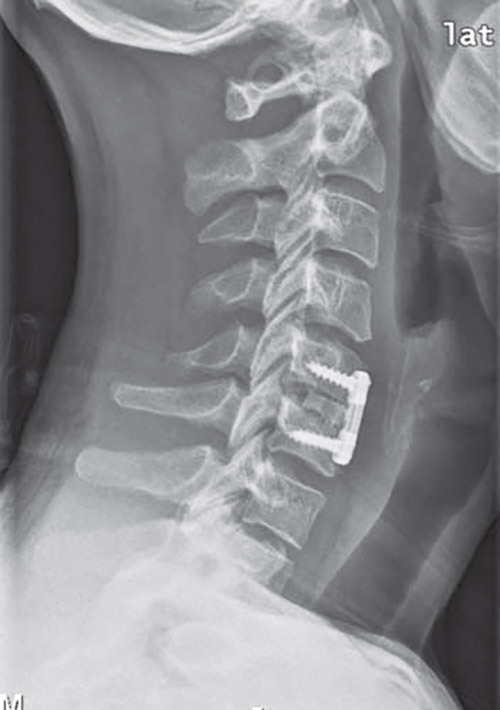


The condition known as a cervical disc herniation with radiculopathy is one of the most common neck and arm complaints. The disc herniation, in a symptomatic patient, presses onto a spinal nerve, leading to pain in the neck as well as numbness and/or weakness into the hand or fingers. The level of the herniation or protrusion determines the degree of pain as well as location in the hand or arm the pain occurs. For instance, a C5-6 herniation, which is a herniation between the fifth and sixth vertebrae, will lead to pain in the arm, either right or left, particularly into the thumb, index and long fingers. Whereas a herniation lower down at C6-7 may affect the fourth and fifth digits.
When symptomatic and not responding to conservative management such as physical therapy and spinal injections, surgery is often needed. Among the two most common surgeries are that of a cervical discectomy and fusion as well as a total disc replacement. Previous articles have discussed the total disc replacement, which represents about 5% to 10% of the surgeries for this condition and this number of growing. However, cervical discectomy and fusion still represent 90% to 95% of the surgeries for this pathology.
The majority of these surgeries are treated with a discectomy, which is removal of the offending disc as well as an implantation of either bone graft or a titanium device, known as a “cage,” within the removed disc space. Over the last 25 years, the gold standard has been to apply a plate onto the vertebral bodies, with screws, to further strengthen the construct.
The last five to seven years have seen an increasing use of plateless technology. This means that once the disc is removed, a device can be placed within the disc with screws, blades or spikes, placed directly through the cage into the vertebral bodies above and below. This yields excellent fixation into the vertebral bodies without the use or need of a plate. The advantage of this technology is that the esophagus and vocal cords, which are sometimes irritated by the plate, are no longer affected because the cage itself is not in contact with those structures.
At the Center for Musculoskeletal Disorders, we have been utilizing this technology over the last seven years. We were privileged to be the first group on the the Eastern Seabord of U.S. and only the seventh in the world to utilize an ELEVATION spine implant. This is an intravertebral disc spacer cage with three spikes going directly through the cage. This cage is unique in that the titanium saber tooth spikes are easily implanted and have a plate imbedded within the cage that does not contact the vocal cords or the esophagus! The surgery was done at Hudson Regional Hospital in December 2019, which among its accolades, also recorded the first use of the M-6 total disc arthroplasty, also by the Center for Musculoskeletal Disorders in October 2019.
We are very privileged and proud of these accomplishments and will continue to advance plateless technology as well as other technologies towards the benefit of patients with these disorders.
Please give every consideration to this option, and give us a call or contact Elianna Kranz, community liason, at [email protected] if you are suffering from neck and/or back pain. We’ve got you covered.
Dr. Jonathan Lewin is a board-certified orthopedic spinal surgeon at The Center for Spinal Disorders, providing services for back pain and spinal disorders. Dr. Lewin is one of the few doctors in the states of New York and New Jersey who is experienced in performing endoscopic fusion surgery. He can be reached at The Center for Musculoskeletal Disorders, 177 N. Dean St., Suite 301, Englewood, NJ 07631; 201-510-3777; www.NJSpinalDisorders.com; or [email protected].












